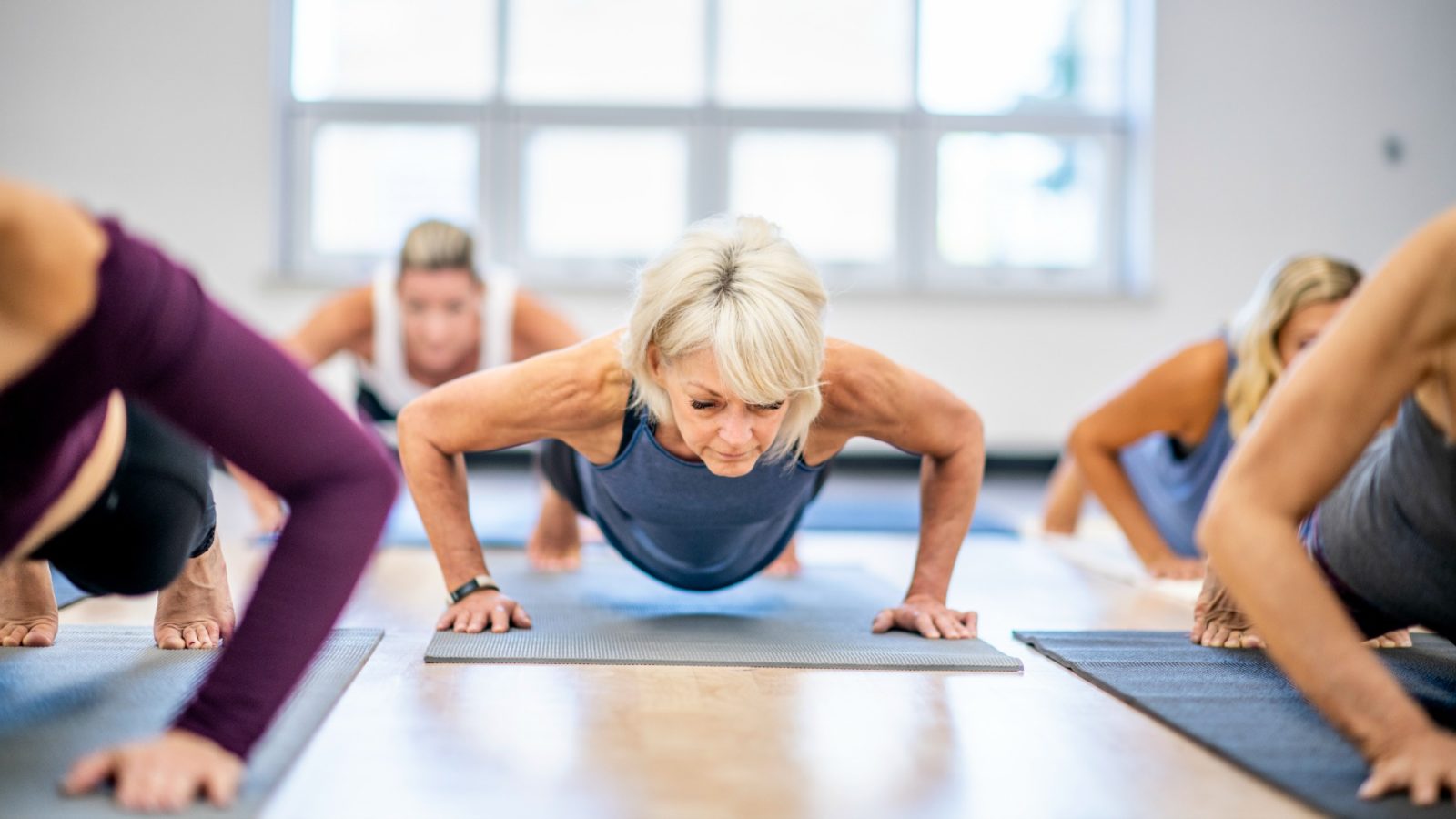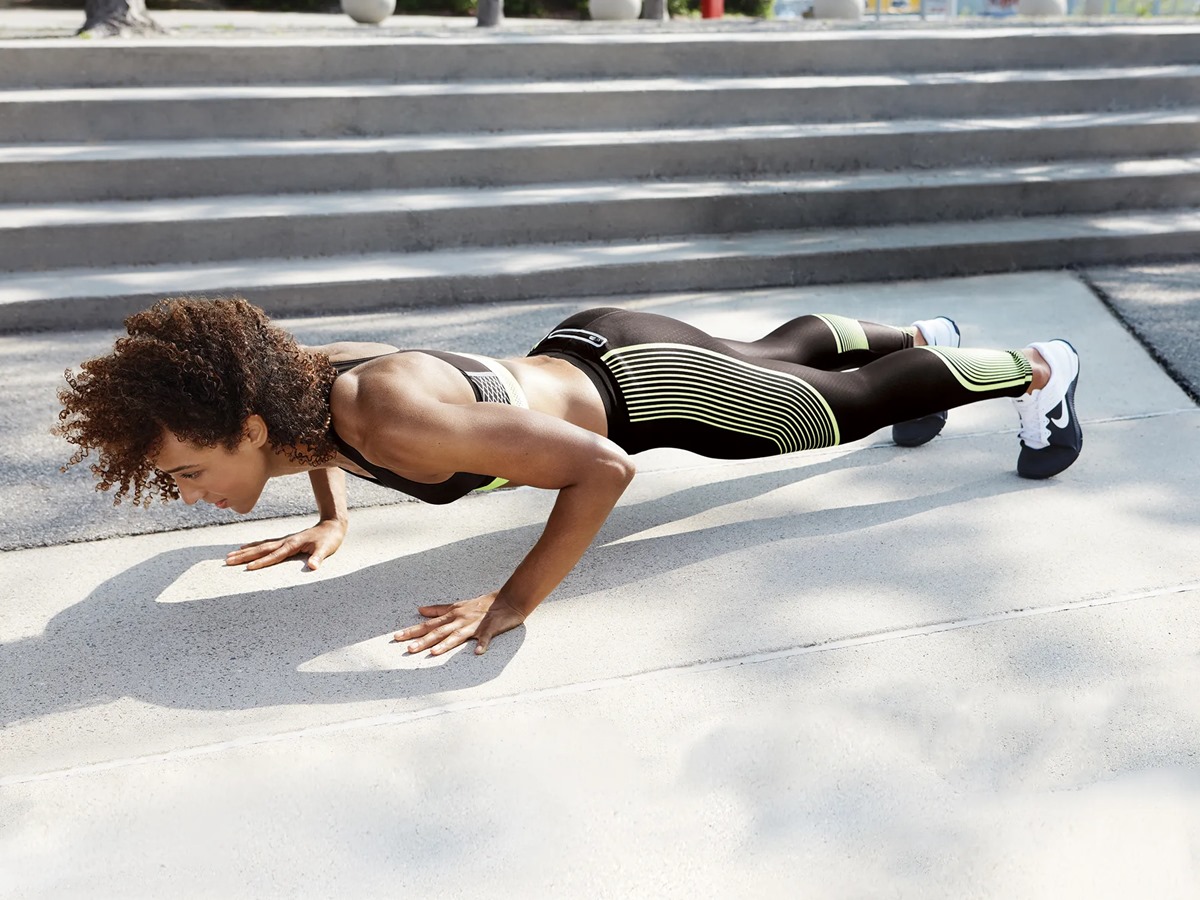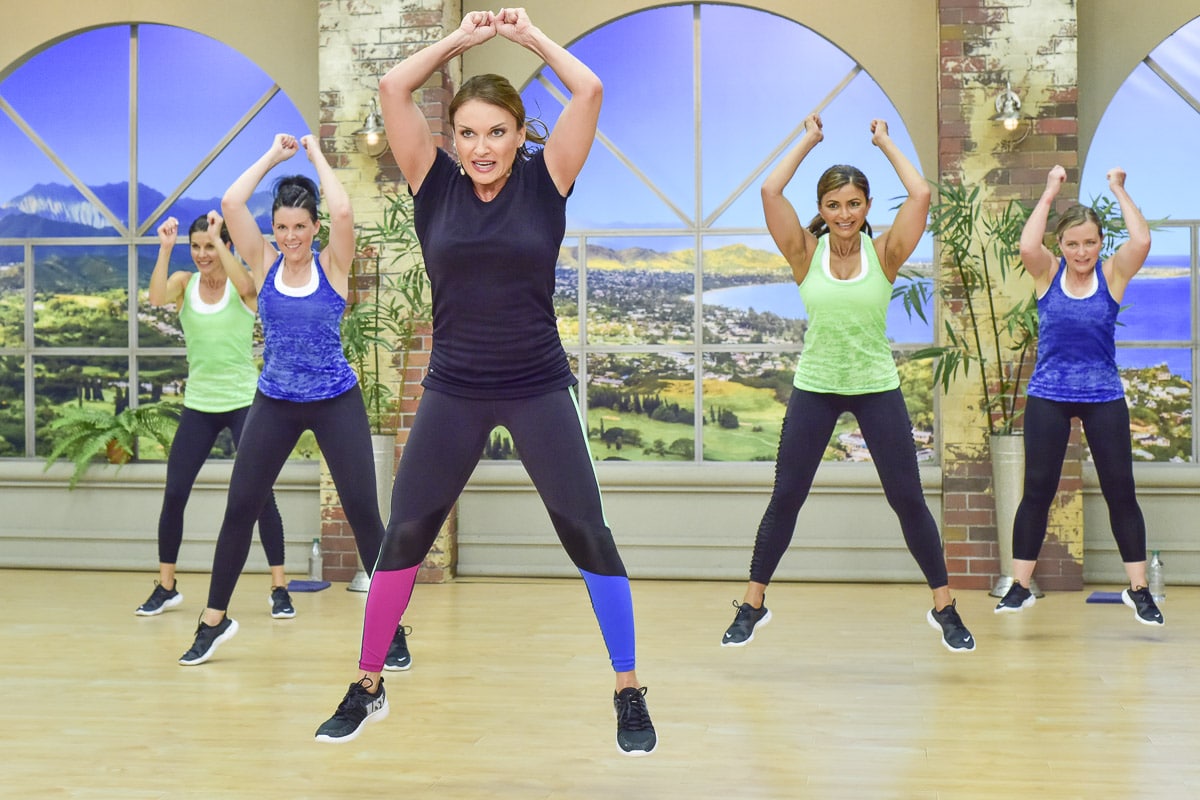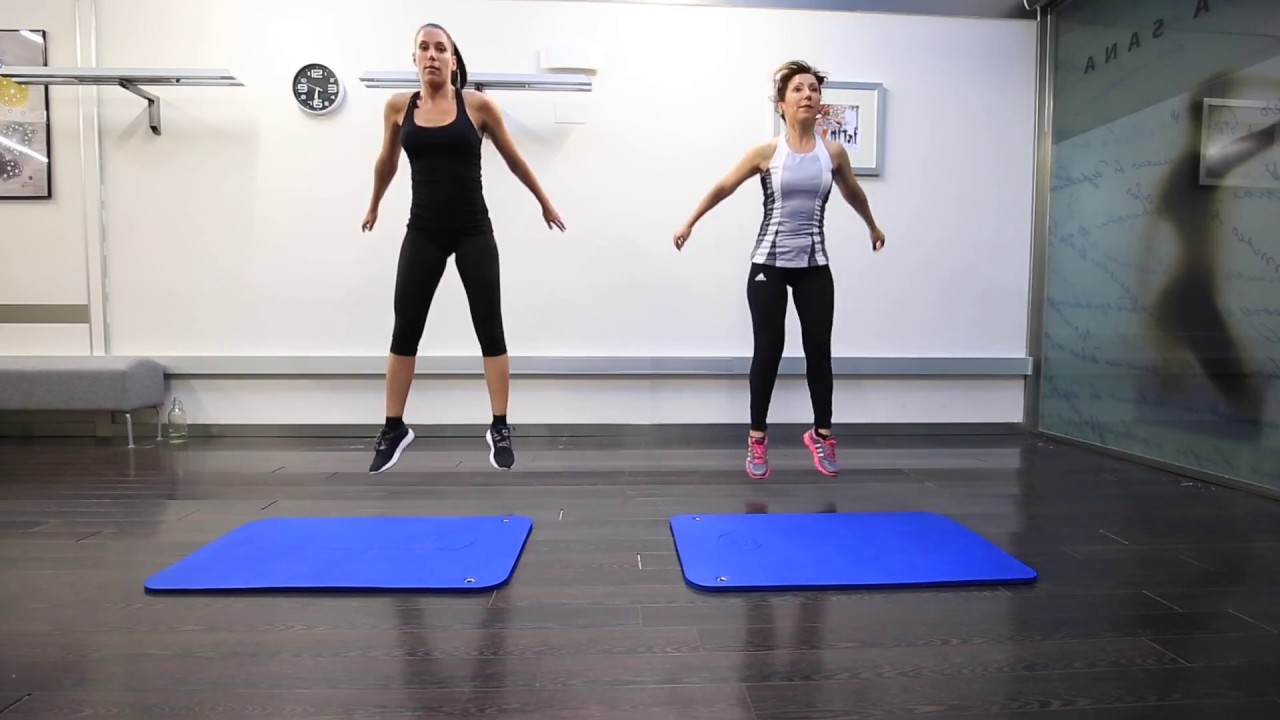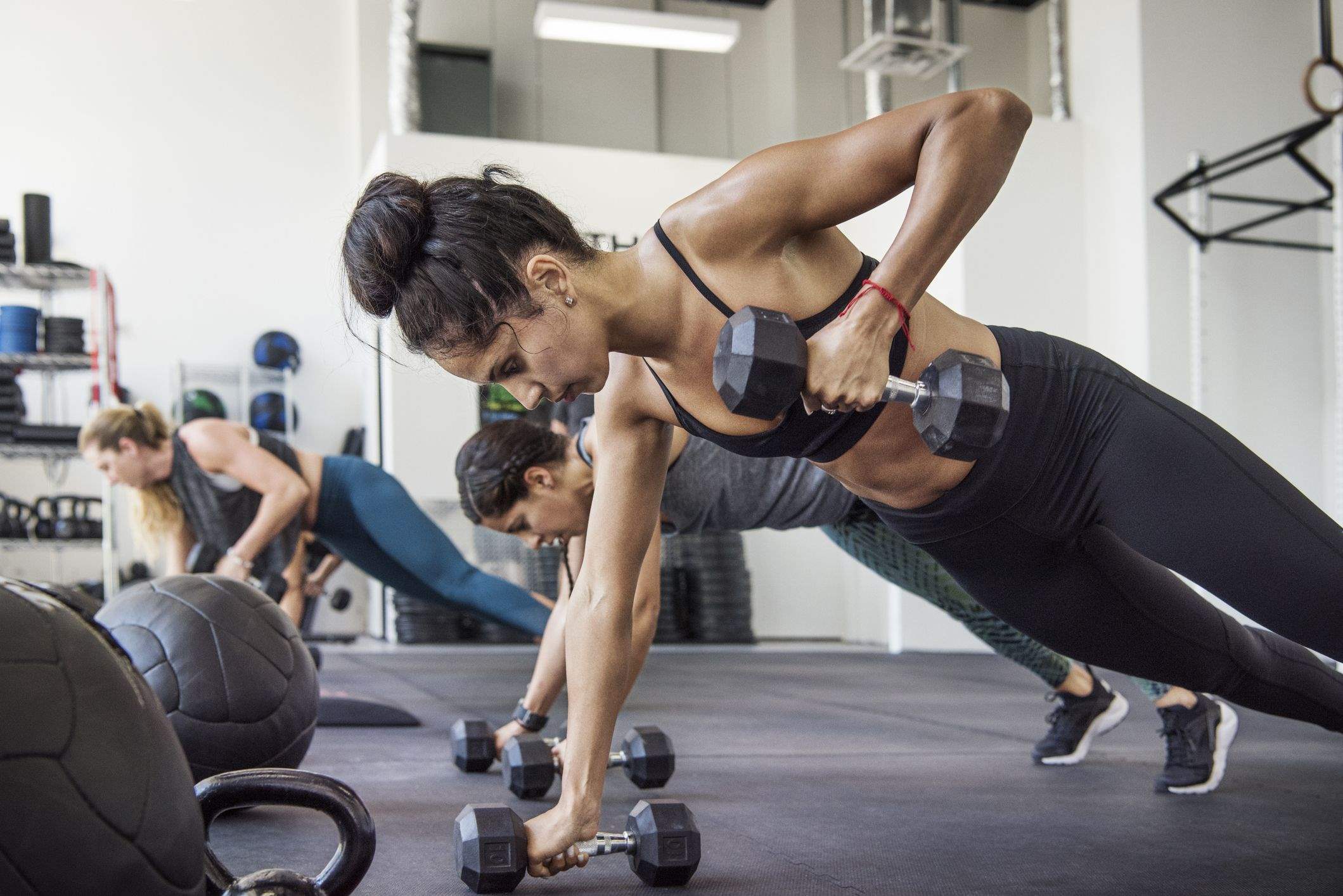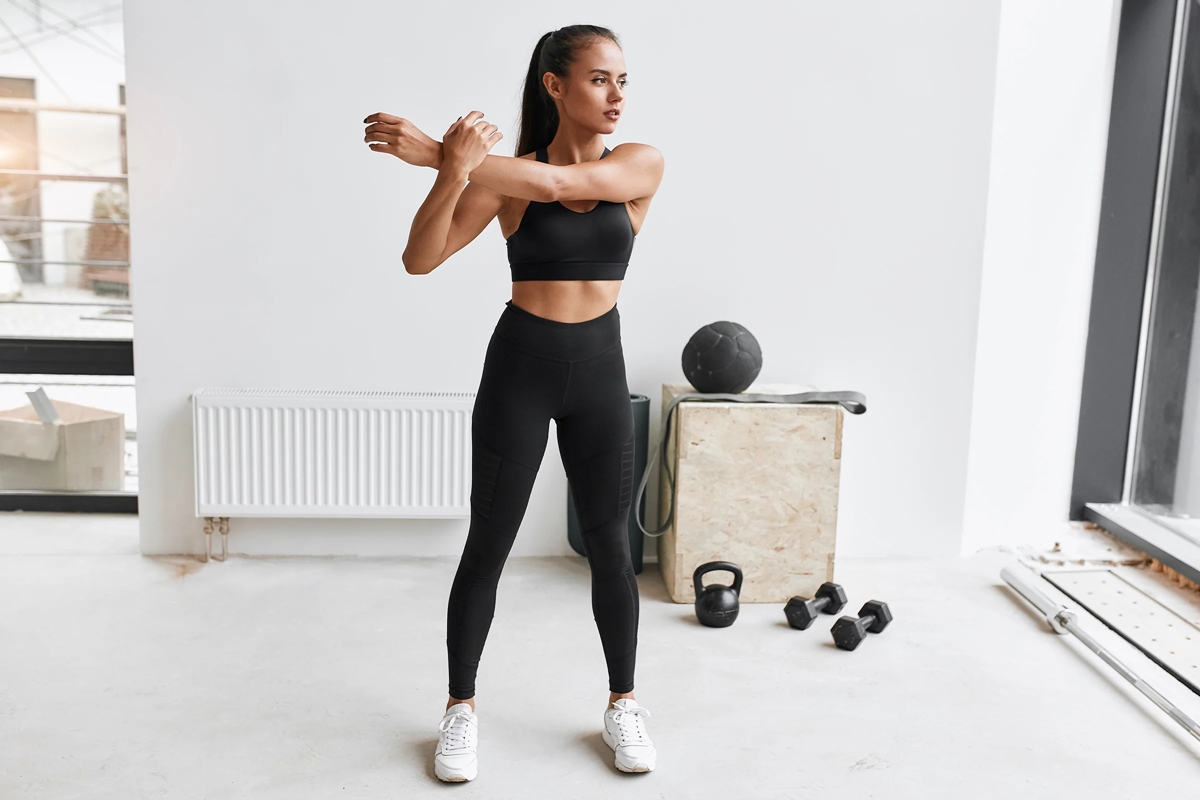Home>Misc>Featured>What Exercises Improve Cardiovascular Fitness
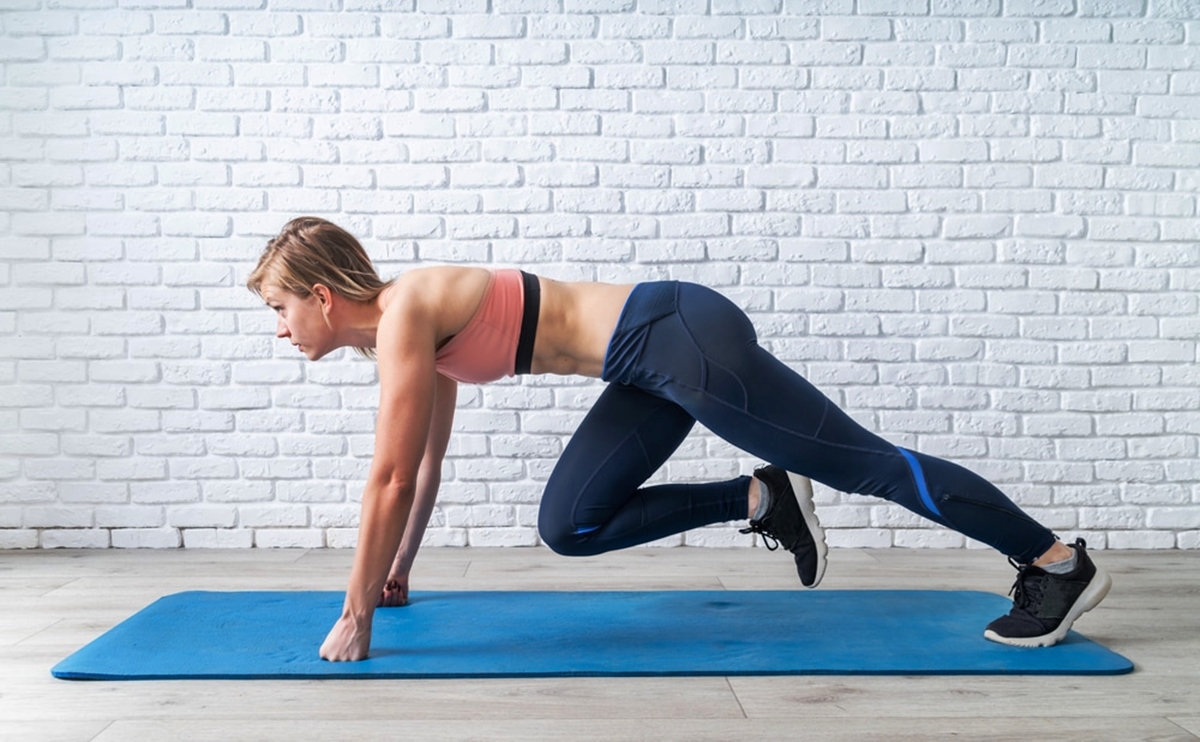

Featured
What Exercises Improve Cardiovascular Fitness
Modified: August 21, 2023
Discover the top featured exercises that can significantly improve your cardiovascular fitness and enhance your overall health and well-being.
Introduction
Welcome to our comprehensive guide on exercises that can help improve cardiovascular fitness. Engaging in regular physical activities that get your heart pumping and increase your breathing rate is crucial for maintaining a healthy cardiovascular system. A strong heart and lungs not only improve your overall fitness levels but also help reduce the risk of developing chronic diseases such as heart disease, stroke, and high blood pressure.
Cardiovascular fitness, also known as aerobic fitness, refers to the body’s ability to supply oxygen to the working muscles during exercise. It is a measure of how efficiently your heart, lungs, and blood vessels deliver oxygen and nutrients to your body’s tissues.
Engaging in regular cardiovascular exercise has numerous benefits for your overall well-being. It can help increase your stamina, improve your circulation, boost your mood, enhance your mental sharpness, and aid in weight management. Additionally, it can lower your resting heart rate and blood pressure, improve lung function, and increase your endurance levels.
There are several key factors to consider when it comes to improving cardiovascular fitness. Firstly, frequency and consistency are essential. You should aim for at least 150 minutes of moderate aerobic exercise or 75 minutes of vigorous aerobic exercise per week, spread out over several days. Secondly, intensity plays a crucial role. You should work out at a level that elevates your heart rate and breathing rate, but still allows you to maintain a conversation without being completely out of breath. Lastly, variety is important to challenge different muscle groups and prevent boredom.
In this article, we will explore a variety of exercises that can help improve your cardiovascular fitness. Whether you prefer high-intensity workouts or low-impact activities, there is something for everyone. By incorporating these exercises into your fitness routine, you can reap the benefits of a healthier heart, increased endurance, and improved overall fitness.
Benefits of Cardiovascular Fitness
Engaging in regular cardiovascular exercise offers a wide range of benefits for your overall health and well-being. Let’s take a closer look at some of the key advantages:
1. Improved Heart Health: Cardiovascular exercise strengthens your heart muscles, making them more efficient at pumping blood throughout your body. This can help reduce the risk of heart disease, lower blood pressure, and improve overall cardiovascular function.
2. Increased Stamina and Endurance: Regular aerobic exercise improves your body’s ability to utilize oxygen, allowing you to perform physical activities for longer periods without getting tired. This increased stamina can enhance your performance in sports, daily activities, and even intimate moments.
3. Weight Management: Cardiovascular workouts burn calories, making them an effective tool for weight loss and weight management. Engaging in activities such as running, cycling, or swimming helps to shed excess pounds and maintain a healthy body weight.
4. Stress Relief: Aerobic exercise stimulates the production of endorphins, also known as “feel-good” hormones, which can elevate your mood and reduce stress levels. Regular workouts can help alleviate symptoms of anxiety and depression, promoting mental well-being.
5. Enhanced Lung Function: Cardiovascular exercise strengthens your respiratory muscles and increases lung capacity, enabling you to take in more oxygen and expel carbon dioxide more efficiently. This can improve your overall lung health and prevent respiratory ailments.
6. Better Sleep: Studies have shown that regular exercise, particularly aerobic activities, can help improve the quality of sleep. By reducing stress and promoting relaxation, cardiovascular exercise can contribute to a more restful and rejuvenating night’s sleep.
7. Increased Energy Levels: Engaging in regular aerobic exercise boosts your energy levels by improving overall circulation and enhancing the delivery of oxygen and nutrients to your muscles. This can make you feel more energized throughout the day and combat feelings of fatigue and lethargy.
8. Improved Brain Function: Cardiovascular exercise has been linked to enhanced cognitive function, memory, and attention span. It increases blood flow to the brain, stimulating the growth of new blood vessels and promoting the release of chemicals that support brain health.
With all these amazing benefits, it’s clear why cardiovascular fitness is an essential component of a healthy lifestyle. By incorporating regular aerobic exercise into your routine, you can enjoy a stronger heart, improved endurance, better mental well-being, and overall enhanced quality of life.
Key Factors for Improving Cardiovascular Fitness
Improving cardiovascular fitness requires attention to certain key factors that play a significant role in maximizing the effectiveness of your workouts. By considering these factors, you can optimize your cardiovascular exercise routine and achieve the desired results. Let’s explore these factors:
1. Frequency: Consistency is crucial when it comes to improving cardiovascular fitness. Aim for at least 150 minutes of moderate-intensity aerobic exercise or 75 minutes of vigorous-intensity aerobic exercise per week. Spread your workouts across multiple days to allow for adequate recovery and adaptation.
2. Intensity: The intensity of your cardiovascular workouts determines how much your heart works and how significantly it adapts. It is important to work out at a level that elevates your heart rate and breathing rate, but still allows you to maintain a conversation without being completely out of breath. Gradually increase the intensity over time to challenge your cardiovascular system and continue making progress.
3. Duration: The duration of your cardiovascular workouts also plays a crucial role in improving fitness levels. Aim for sessions lasting between 20 to 60 minutes, depending on your fitness level and goals. Consider incorporating longer duration activities into your routine, such as hiking or long-distance running, to enhance endurance and train for specific events.
4. Varying Workouts: Changing up your cardiovascular exercises not only keeps things interesting but also challenges different muscle groups and prevents plateaus. Incorporate a variety of activities into your routine, such as running, cycling, swimming, jumping rope, or using cardio machines at the gym. This variety targets different muscles and helps improve overall cardiovascular capacity.
5. Progressive Overload: To continually improve cardiovascular fitness, progressively overload your workouts over time. This involves gradually increasing the intensity, duration, or frequency of your workouts. For example, you could increase the distance or speed of your runs or incorporate intervals into your cycling sessions. Consistently challenging your cardiovascular system will promote continued adaptations and improvements.
6. Warm-up and Cool-down: Prior to starting your cardiovascular workouts, it is important to warm up your muscles and prepare your body for exercise. This can include light aerobic movements, dynamic stretching, or a short jog. Similarly, cooling down after your workout helps bring your heart rate back to normal gradually and prevent muscle soreness. Include a few minutes of low-intensity exercise and static stretching in your cool-down routine.
7. Rest and Recovery: Rest and recovery are important aspects of improving cardiovascular fitness. Allow your body enough time to recover between intense workouts to avoid overtraining and reduce the risk of injury. Incorporate active recovery days, where you engage in gentle exercises or rest completely, giving your body the opportunity to repair and adapt.
8. Listen to Your Body: Pay attention to your body’s signals and adjust your workouts accordingly. It is important to distinguish between normal fatigue and pain or discomfort that may indicate an injury. Push yourself, but also learn when to take a step back and allow for proper recovery. Remember, consistency is key, but so is taking care of your body.
By considering these key factors and incorporating them into your cardiovascular exercise routine, you can optimize your efforts and achieve significant improvements in your fitness levels. Remember, always consult with a healthcare professional or fitness expert before starting a new exercise program, especially if you have any underlying health conditions or concerns.
Recommended Exercises for Improving Cardiovascular Fitness
There are numerous exercises that can help improve cardiovascular fitness and elevate your heart rate. Whether you prefer high-intensity workouts or low-impact activities, there is something for everyone. Let’s take a look at some of the top recommended exercises:
-
Running
Running is one of the most effective and accessible forms of cardiovascular exercise. It can be done outdoors or on a treadmill, providing a great full-body workout. Start with a brisk walk and gradually increase your pace to a comfortable jog or run. You can customize your running routine by incorporating intervals, hills, or long-distance runs.
-
Cycling
Cycling, whether outdoors or using a stationary bike, is a low-impact exercise that strengthens your legs, glutes, and core while improving cardiovascular fitness. Go for a leisurely bike ride or challenge yourself with high-intensity interval training (HIIT) on the stationary bike. Enjoy the fresh air, scenic routes, or indoor cycling classes at your local gym.
-
Swimming
Swimming is a fantastic low-impact exercise that engages the entire body and provides an excellent cardiovascular workout. Whether you choose freestyle, breaststroke, or butterfly, the resistance of the water helps to build strength and endurance. Swimming laps or participating in water aerobics classes can help improve cardiovascular fitness while being gentle on the joints.
-
Jumping Rope
Jumping rope is a simple and effective exercise that can be done anywhere, making it a convenient option for improving cardiovascular fitness. It is a high-intensity, calorie-burning workout that targets multiple muscle groups. Start with shorter intervals and gradually increase the duration as you build up your stamina. Get creative with different jump rope techniques to keep it fun and varied.
-
High-Intensity Interval Training (HIIT)
HIIT involves alternating short bursts of intense exercise with brief periods of rest or lower-intensity activity. This type of workout gets your heart rate up quickly, boosting cardiovascular fitness and burning calories in a shorter amount of time. Examples of exercises that can be included in a HIIT routine are burpees, mountain climbers, jumping jacks, and high knees.
-
Rowing
Rowing is a full-body workout that engages your upper body, lower body, and core muscles. Whether you choose a rowing machine at the gym or rowing on water, it provides an effective cardiovascular workout. Focus on maintaining proper form and increasing your speed and intensity over time to challenge yourself and improve cardiovascular fitness.
-
Stair Climbing
Stair climbing is a great way to get your heart rate up and work your lower body muscles. You can climb actual stairs or use a stair climber machine at the gym. Challenge yourself by increasing the speed, taking larger steps, or adding resistance. Stair climbing helps to improve cardiovascular endurance and strengthen your legs.
-
Dancing
Dancing is a fun and entertaining way to improve cardiovascular fitness. Join a dance class or simply turn up the music and dance around in the comfort of your own home. Whether it’s salsa, hip-hop, Zumba, or ballroom dancing, it can elevate your heart rate, improve coordination, and boost your mood.
-
Circuit Training
Circuit training involves performing a series of exercises targeting different muscle groups with little to no rest in between. This type of workout keeps your heart rate elevated throughout, providing both strength training and cardiovascular benefits. Incorporate exercises such as push-ups, squats, lunges, and jumping jacks to create a challenging circuit.
-
Aerobic Classes
Participating in aerobic classes, such as step aerobics, kickboxing, or dance aerobics, can be a fun and energizing way to improve cardiovascular fitness. These classes typically involve choreographed movements and music, keeping you motivated and engaged throughout the workout. Find a class that suits your preferences and enjoy the benefits of a high-energy cardio session.
Remember, choose exercises that align with your fitness level and preferences. Start slowly and gradually increase the intensity and duration of your workouts to avoid overexertion. Stay consistent and make cardiovascular exercise a regular part of your fitness routine to maximize the benefits for your heart, lungs, and overall health.
Running
Running is a popular and effective exercise for improving cardiovascular fitness. It can be done outdoors or on a treadmill, making it accessible to people of all fitness levels and locations. Running engages multiple muscle groups, including the legs, core, and upper body, making it a full-body workout.
Start with a brisk walk to warm up your muscles and gradually increase your pace to a comfortable jog or run. As your fitness level improves, you can challenge yourself by incorporating intervals, hills, or long-distance runs into your routine. Running at a higher intensity elevates your heart rate, increasing the cardiovascular benefits of the exercise.
Running regularly helps to strengthen the heart muscles, improve circulation, and increase lung capacity. It also aids in weight management as it is a calorie-burning activity. The repetitive impact of running can help improve bone density and promote bone health.
One of the advantages of running is its versatility. You can customize your running routine to suit your preferences and goals. If you enjoy being outdoors, take advantage of scenic routes, parks, or running trails in your area. Running outdoors also exposes you to fresh air and nature, providing a refreshing and invigorating experience.
For those who prefer indoor workouts, running on a treadmill is a great option. It provides a controlled environment where you can track your speed, distance, and other metrics. You can also adjust the incline and simulate the experience of running uphill or downhill.
Running is not only beneficial for physical fitness but also for mental well-being. It helps to reduce stress, boost mood, and improve cognitive function. Many runners find it to be a form of therapy, providing an opportunity to clear the mind and find solace in the rhythm of their footsteps.
When incorporating running into your fitness routine, it’s important to listen to your body and avoid overexertion. Start with shorter distances or durations and gradually increase the intensity and duration as your fitness level improves. Remember to wear proper running shoes, maintain good posture, and stretch before and after each run to prevent injuries.
Whether you prefer short sprints, long-distance running, or interval training, running can be customized to meet your specific goals and fitness level. Stay consistent, stay hydrated, and enjoy the freedom and benefits that running provides for your cardiovascular fitness and overall well-being.
Cycling
Cycling is a low-impact exercise that provides an excellent cardiovascular workout while being gentle on the joints. It can be done outdoors on a road bike or indoors using a stationary bike, making it a versatile option for people of all fitness levels and preferences.
Whether you’re a beginner or an experienced cyclist, this activity engages major muscle groups in the lower body, including the quadriceps, hamstrings, glutes, and calves. It also works the core and provides a lower-body workout without putting excessive stress on the joints.
One of the great advantages of cycling is the opportunity to explore the outdoors and enjoy the scenery. Outdoor cycling allows you to connect with nature, breathe in fresh air, and enjoy different routes or trails. It can be a solo activity or a social one, as you can join group rides or cycling clubs to enhance your experience.
If weather or other factors limit your ability to ride outdoors, indoor cycling on a stationary bike is an effective alternative. It provides a controlled environment where you can adjust the resistance, pedal speed, and intensity of your workout. Many gyms offer indoor cycling classes that are led by instructors and set to music, making it a fun and motivating group exercise experience.
Whether you choose outdoor or indoor cycling, this activity strengthens the cardiovascular system. It improves heart health, increases lung capacity, and enhances overall endurance. Regular cycling can lead to lowered blood pressure, improved circulation, and a reduced risk of heart disease and stroke.
Another benefit of cycling is the potential for weight management. It’s a calorie-burning activity that can help you shed excess pounds and maintain a healthy body weight. By incorporating varying terrains, such as uphill climbs or sprints, you can challenge yourself and increase the intensity of your workout to maximize calorie burn.
Cycling also has positive impacts on mental well-being. It can reduce stress, improve mood, and boost mental clarity. The rhythmic motion and focus required during cycling can be meditative and have a calming effect on the mind.
When starting a cycling routine, be sure to wear a helmet and other appropriate safety gear. It’s also essential to adjust your bike to fit your body properly to prevent discomfort or injuries. Start with shorter rides and gradually increase your distance and intensity over time. Don’t forget to warm up before and cool down after each ride, and always listen to your body’s signals.
Whether you choose to cycle for leisure, commuting, or as a competitive sport, it provides an enjoyable and effective way to improve cardiovascular fitness. Make cycling a regular part of your fitness routine to experience the many physical and mental health benefits it offers.
Swimming
Swimming is a highly effective exercise for improving cardiovascular fitness while being gentle on the joints. It provides a whole-body workout that engages the muscles of the arms, legs, back, and core, making it an excellent option for individuals of all fitness levels and ages.
Swimming is unique because it takes place in water, which offers natural resistance that challenges and strengthens the muscles. It also provides buoyancy, reducing the impact on the joints, which is especially beneficial for individuals with joint pain or those who are recovering from injuries.
Whether you choose to swim laps in a pool, participate in water aerobics classes, or simply enjoy recreational swimming, this activity offers numerous cardiovascular health benefits. It strengthens the heart, improves cardiovascular endurance, and increases lung capacity by engaging in rhythmic breathing while navigating through the water.
One of the advantages of swimming is its low-impact nature. It reduces stress on the joints and can be particularly beneficial for individuals with arthritis, back pain, or mobility limitations. Water’s natural buoyancy also creates a supportive environment that reduces the risk of injury.
Swimming is a highly versatile exercise that can be adjusted to meet your fitness level and goals. You can vary your intensity by swimming at a leisurely pace or incorporating interval training with faster laps. Additionally, changing swimming strokes, such as freestyle, breaststroke, or butterfly, targets different muscle groups, providing a well-rounded workout.
Swimming is also an excellent choice for individuals looking to manage their weight. It is a calorie-burning activity that can help with weight loss or weight maintenance. Increasing the intensity or duration of your swimming session can further enhance calorie burn.
Aside from its physical benefits, swimming is known to have positive impacts on mental health and well-being. It can be a calming and meditative activity, providing a break from the stresses of daily life. The feeling of weightlessness in the water and the repetitive nature of swimming can promote relaxation, reduce anxiety, and enhance overall mental well-being.
Whether you’re a beginner or an experienced swimmer, it’s important to start at your own pace and gradually increase the intensity and duration of your sessions. If you’re new to swimming, consider taking lessons to improve technique and build confidence in the water.
Remember to stay hydrated and listen to your body during swimming sessions. Take breaks as needed and be mindful of any signs of fatigue or overexertion. Properly warming up before swimming and cooling down afterward can help prevent muscle soreness and reduce the risk of injury.
Swimming offers a refreshing and enjoyable way to improve cardiovascular fitness while providing a low-impact, full-body workout. Dive into this heart-healthy activity and enjoy the multitude of benefits it offers for your overall health and well-being.
Jumping Rope
Jumping rope is a simple yet highly effective exercise that can significantly improve cardiovascular fitness. It is a high-intensity, calorie-burning activity that provides a full-body workout, making it suitable for individuals of all fitness levels.
Jumping rope involves using a rope, typically made of nylon or PVC, and jumping over it with both feet while swinging the rope overhead and underfoot. It engages multiple muscle groups, including the legs, arms, shoulders, and core, making it a comprehensive exercise that works the entire body.
One of the major benefits of jumping rope is its convenience. It can be done virtually anywhere, indoors or outdoors, with minimal space and equipment requirements. All you need is a sturdy skipping rope and enough room to jump freely without obstacles. This makes it a great option for individuals who prefer at-home workouts or have limited access to a gym.
Jumping rope is an excellent way to improve cardiovascular fitness due to its high-intensity nature. It elevates your heart rate quickly and challenges your cardiovascular system, improving endurance and stamina. Regular jumping rope sessions can increase lung capacity and overall cardiovascular health.
In addition to cardiovascular benefits, jumping rope also contributes to building strength and coordination. It helps develop stronger leg muscles, including the calves, quadriceps, and glutes. The repetitive jumping motion improves coordination, agility, and balance.
This exercise is highly customizable, allowing you to vary your intensity and challenge yourself. For beginners, start with shorter intervals and gradually increase the duration as your fitness level improves. Incorporating variations, such as double unders (two rotations of the rope for each jump) or high knee jumps, adds complexity and intensifies the workout.
Jumping rope is not only effective but also time-efficient. A few minutes of jumping rope can burn a significant number of calories. It can be incorporated into a circuit training routine or used as a dynamic warm-up before other exercises.
While jumping rope is a fantastic exercise, it is essential to practice proper technique and take precautions to prevent injury. Ensure that you have a properly sized rope that allows for smooth rotation without tripping. It is also important to land softly on the balls of your feet to reduce impact on your joints.
As with any exercise, listen to your body and work within your limits. Start slowly and gradually increase the intensity and duration of your jumping rope sessions. Stay hydrated and consider incorporating a low-impact exercise, such as walking or stretching, on your off days to allow for recovery.
Jumping rope offers a fun and challenging way to improve cardiovascular fitness, build strength, and enhance coordination. So grab a rope, find a suitable space, and get ready to jump your way to a healthier heart and body!
High-Intensity Interval Training (HIIT)
High-Intensity Interval Training (HIIT) is a popular and effective exercise technique for improving cardiovascular fitness in a short amount of time. It involves alternating between intense bursts of exercise and short periods of rest or active recovery.
What sets HIIT apart from other forms of cardiovascular exercise is the intensity at which it is performed. During the intense intervals, you push your body to its maximum capacity, elevating your heart rate and challenging your cardiovascular system. This spike in intensity significantly increases the calorie burn and cardiovascular benefits of the workout.
HIIT workouts can be customized to your fitness level and preferences. You can choose various exercises such as burpees, mountain climbers, jumping jacks, high knees, or sprints, and perform them in short, intense bursts. The active recovery or rest periods allow your body to recover slightly before pushing through the next interval.
One of the advantages of HIIT is its time efficiency. Due to the high intensity and shorter duration, you can complete a challenging HIIT workout in as little as 15-20 minutes. This makes it ideal for individuals with busy schedules who struggle to find time for longer workout sessions.
Aside from its time-saving benefits, HIIT has been shown to improve cardiovascular endurance and increase overall fitness levels. The intense intervals push your cardiovascular system to adapt and become more efficient at delivering oxygen to your muscles. Over time, this can lead to improved stamina and endurance.
HIIT workouts not only provide cardiovascular benefits but also help with weight management. The high-intensity intervals stimulate the metabolism and promote calorie burn long after the workout session has ended. This effect, known as the afterburn effect or excess post-exercise oxygen consumption (EPOC), means you continue to burn calories even during rest periods following the workout.
Another advantage of HIIT is its versatility. It can be done with little to no equipment, making it accessible to individuals who prefer at-home workouts or have limited access to gym facilities. Bodyweight exercises, such as squat jumps, plank variations, or high knees, can be incorporated into a HIIT routine without the need for additional equipment.
While HIIT can be highly beneficial, it is essential to approach it with caution, especially if you are new to high-intensity exercise. It is crucial to gradually increase the intensity and duration of your HIIT workouts to prevent overexertion and reduce the risk of injury. Always listen to your body and modify exercises or rest longer if needed.
Before starting a HIIT program, it is recommended to consult with a healthcare professional or a qualified fitness instructor to ensure it aligns with your current fitness level and any pre-existing health conditions.
Incorporating HIIT into your fitness routine can help improve cardiovascular fitness, boost metabolism, and maximize calorie burn. Its time efficiency and adaptability make it an excellent option for individuals looking to elevate their workouts and achieve impressive fitness results.
Rowing
Rowing is a highly effective exercise that engages multiple muscle groups and provides an excellent cardiovascular workout. It involves simulated rowing motions either on a rowing machine (ergometer) or on the water using a rowing boat, making it a versatile option for individuals of all fitness levels.
One of the key benefits of rowing is its ability to work both the upper and lower body simultaneously. With each stroke, you engage muscles in your arms, shoulders, back, core, glutes, and legs. This full-body engagement makes rowing a highly efficient exercise for improving cardiovascular fitness.
Rowing is a low-impact exercise, which means it puts less stress on your joints compared to high-impact activities like running. This makes it an excellent option for those who want to minimize joint strain or for individuals recovering from injuries.
Rowing is not only beneficial for cardiovascular fitness but also for strength and endurance. The resistance created by the rowing machine or the water provides a challenging workout that can help increase muscle strength and improve overall muscular endurance.
Rowing is a highly customizable exercise that allows you to adjust the resistance level to match your fitness level and goals. Rowing machines often have adjustable settings to increase or decrease the resistance, enabling you to progress at your own pace. On the water, you can control the speed and intensity of your rowing strokes to challenge yourself.
Rowing is a low-impact exercise, which means it puts less stress on your joints compared to high-impact activities like running. This makes it an excellent option for those who want to minimize joint strain or for individuals recovering from injuries.
In addition to the physical benefits, rowing also provides a mental workout. The repetitive motion combined with the rhythmic sound of the rowing machine or the peacefulness of rowing on water can have a calming effect, reducing stress and improving overall mental well-being.
When incorporating rowing into your fitness routine, it is important to maintain proper form and technique to prevent injuries. Take the time to learn the correct rowing technique or seek guidance from a qualified instructor to ensure you are performing the exercise correctly.
Whether you choose rowing on a machine or rowing on water, start with shorter durations and gradually increase the intensity and duration as your fitness level improves. Ensure that you warm up your muscles before rowing and cool down afterward to prevent muscle soreness and minimize the risk of injury.
Rowing provides a challenging and effective cardiovascular workout that strengthens your muscles and improves overall fitness. Whether you are looking to increase your endurance, build strength, or simply add variety to your routine, rowing is a great option to consider.
Stair Climbing
Stair climbing is a fantastic exercise that not only strengthens your legs but also provides an excellent cardiovascular workout. Whether you climb actual stairs or use a stair climber machine, this workout engages multiple muscle groups and elevates your heart rate, making it an effective option for improving cardiovascular fitness.
Stair climbing is a weight-bearing exercise that helps build strength and power in your lower body. It targets the glutes, quadriceps, hamstrings, and calves, providing a focused and intense workout for these muscle groups. The repetitive motion of climbing stairs also helps improve balance, coordination, and overall lower body stability.
One of the key benefits of stair climbing is its ability to burn a significant number of calories in a relatively short amount of time. The vertical movement against gravity requires more effort, increasing your heart rate and energy expenditure. This makes stair climbing a highly effective exercise for weight management and overall cardiovascular health.
An advantage of stair climbing is that it can be easily incorporated into your daily routine. Whether you live in a multi-story building, work in an office with stairs, or have access to a stair climber machine at the gym, you can incorporate stair climbing sessions throughout the day. Taking the stairs instead of the elevator or escalator can be a simple and effective way to add more physical activity to your daily life.
Stair climbing is a versatile exercise that allows you to adjust the intensity according to your fitness level and goals. You can climb stairs at a steady pace for a sustained cardiovascular workout or add some intensity by taking two steps at a time or by increasing your speed. Incorporating intervals, such as alternating between climbing stairs and performing bodyweight exercises on a landing, can further enhance the benefits of your workout.
While stair climbing is a highly effective exercise, it is essential to approach it with caution, especially if you have any knee or joint issues. It’s important to use proper technique and wear appropriate footwear to ensure stability and minimize the risk of injury.
As with any cardiovascular exercise, it’s important to start gradually and build your endurance over time. Begin with shorter stair climbing sessions and gradually increase the duration and intensity as your fitness level improves. Remember to warm up before each session by performing dynamic stretches or a light walk, and cool down afterward with static stretches to prevent muscle soreness.
Stair climbing provides an affordable and accessible option for improving cardiovascular fitness, strengthening lower body muscles, and managing weight. Incorporate stair climbing into your routine to reap the benefits of a challenging workout that can be tailored to your fitness level and easily integrated into your daily life.
Dancing
Dancing is not only a fun and expressive form of art, but it also offers a fantastic way to improve cardiovascular fitness. Whether you join a dance class, take part in social dancing events, or simply groove to your favorite tunes at home, dancing provides a dynamic and engaging workout that gets your heart pumping.
Different dance styles, such as salsa, hip-hop, ballroom, or Zumba, offer varying intensities and movements, allowing you to choose the style that suits your preferences and fitness goals. Dancing challenges your coordination, balance, and flexibility while providing a cardiovascular workout that elevates your heart rate.
One of the key benefits of dancing is its ability to make exercise feel like a form of entertainment. When you’re dancing, you may not even realize you’re working out because you’re having so much fun. It’s an activity that can be enjoyed alone or with others, making it a social and engaging exercise option.
Dancing involves movements that work various muscle groups throughout your body. You engage your legs, glutes, and core with steps, jumps, and turns, while your arms, shoulders, and back move with grace and rhythm. This comprehensive workout helps to improve muscular endurance and contributes to your overall cardiovascular fitness.
In addition to the physical benefits, dancing has positive impacts on mental well-being. It reduces stress levels, boosts mood, and improves cognitive function. The combination of music, movement, and self-expression during dancing releases endorphins, creating a sense of happiness and positive energy.
Another advantage of dancing is its versatility. You can dance anywhere, anytime, and with minimal equipment. You don’t necessarily need a dance studio or specific dance shoes to reap the benefits. Just turn up the music and let your body move to the rhythm.
If you prefer a structured environment, joining a dance class or taking part in dance fitness programs like Zumba can provide guidance, structure, and an opportunity to learn new dance styles. These classes often include choreographed routines that offer a full-body workout and can challenge your cardiovascular fitness.
When incorporating dancing into your fitness routine, start at a comfortable pace and gradually increase the intensity and duration of your sessions. Remember to warm up your muscles before dancing, and take breaks as needed to prevent exhaustion or overexertion. Hydrate properly to support your body’s needs during dance sessions.
Whether you’re dancing in a studio, at a party, or in the comfort of your own home, incorporating dance into your fitness routine can greatly improve cardiovascular fitness, strengthen muscles, and uplift your spirits. So put on your favorite song, let loose, and enjoy the benefits of dancing for your physical and mental well-being.
Circuit Training
Circuit training is a highly effective and versatile exercise method that combines cardiovascular and strength training into a single workout. It involves performing a series of exercises, or stations, targeting different muscle groups with little to no rest in between. This form of training elevates the heart rate while simultaneously building strength and endurance.
One of the major benefits of circuit training is its efficiency. By alternating between different exercises, you can work multiple muscle groups and challenge various fitness components in a shorter amount of time. This makes it a time-saving option for individuals with busy schedules who still want to achieve a complete workout.
Circuit training can be adapted to suit different fitness levels and goals. You can modify the number of stations, the duration of each exercise, and the intensity to match your capabilities and preferences. As you progress, you can increase the number of circuits or incorporate more challenging exercises and equipment.
The cardiovascular component of circuit training boosts your heart rate and helps improve cardiovascular endurance. Moving quickly from one station to the next keeps your heart rate elevated, offering similar benefits to traditional aerobic exercises. The strength training aspect helps build lean muscle mass, improving overall strength and promoting a faster metabolism.
Another advantage of circuit training is its versatility. You can design a circuit tailored to your specific goals, whether it’s focusing on full-body workouts, targeting specific muscle groups, or incorporating exercises that mimic activities related to your sport or daily life.
In addition to its physical benefits, circuit training offers mental stimulation by challenging your coordination, focus, and ability to transition between exercises. The variation and fast-paced nature of circuit training can keep you engaged and motivated throughout the workout.
When planning a circuit training routine, ensure that you include a balance of exercises targeting different muscle groups such as squats, push-ups, lunges, shoulder presses, and planks. You can also incorporate cardiovascular exercises like jumping jacks, burpees, or skipping rope to elevate your heart rate between strength exercises.
It’s important to maintain proper form and technique during each exercise to prevent injuries. If you’re new to circuit training, consider seeking guidance from a fitness professional to ensure you’re performing the exercises correctly and to customize the circuit to your specific needs.
As with any exercise program, it’s crucial to listen to your body and rest as needed. Don’t push yourself to the point of exhaustion or ignore any signs of pain or discomfort. Allow time for recovery and make adjustments to the intensity or duration of your circuit training sessions as necessary.
Circuit training offers a well-rounded and time-efficient workout that improves cardiovascular fitness, builds strength, and increases muscular endurance. Incorporate this dynamic training method into your fitness routine to challenge your body, maximize results, and enjoy the benefits of a complete workout.
Aerobic Classes
Aerobic classes are high-energy group fitness sessions that focus on improving cardiovascular fitness through choreographed movements and continuous rhythmic exercises. These classes offer a fun and motivating environment with upbeat music, enthusiastic instructors, and a community atmosphere.
Participating in aerobic classes provides numerous benefits for cardiovascular health. The combination of aerobic exercises, dance movements, and interval training increases the heart rate, improving oxygen uptake and enhancing overall cardiovascular endurance.
One of the advantages of aerobic classes is the variety of options available. You can choose from a wide range of classes such as step aerobics, high-impact cardio, dance aerobics, kickboxing, or cardio hip-hop. Each class offers its own unique combination of movements and intensities to cater to different fitness levels and preferences.
Aerobic classes are a great option for individuals who thrive in a group setting and enjoy the energy and motivation that comes from exercising alongside others. The camaraderie and support from fellow participants and the instructor can boost enthusiasm and accountability, making it easier to stay committed to regular workouts.
These classes are designed to be accessible for all fitness levels, allowing participants to modify movements and intensities based on individual capabilities. Instructors often provide modifications or offer different levels of intensity to accommodate beginners or more advanced participants.
Aerobic classes not only improve cardiovascular fitness but also contribute to weight management. The high-intensity nature of the workouts helps burn calories, facilitating weight loss or weight maintenance. Regular participation in aerobic classes, combined with a balanced diet, can have a positive impact on body composition.
Aside from its physical benefits, aerobic classes also promote mental well-being. The upbeat music, engaging movements, and energetic atmosphere create an enjoyable and stress-relieving environment. The release of endorphins during exercise can elevate mood, reduce anxiety, and improve cognitive function.
Prior to participating in aerobic classes, it’s important to choose the appropriate class for your fitness level and goals. If you’re new to aerobic workouts, start with lower-impact classes or beginner-friendly sessions. Proper attire and footwear are essential for comfort and injury prevention.
During the class, listen to your body and adjust the intensity or take breaks as needed. Stay hydrated by bringing a water bottle and make sure to warm up before the session and cool down afterward. Stretching at the end of the class can help restore flexibility and prevent muscle soreness.
Whether you’re a beginner or experienced exerciser, there’s an aerobic class for everyone. By incorporating regular aerobic classes into your fitness routine, you can experience the multitude of benefits for cardiovascular health, weight management, and mental well-being. So put on your workout gear, join the rhythm, and let aerobic classes amp up your fitness journey.
Conclusion
Improving cardiovascular fitness is essential for maintaining overall health and well-being. Engaging in regular aerobic exercise helps strengthen the heart, improve lung capacity, and increase overall endurance. It also provides a wide range of additional benefits, including weight management, stress reduction, and improved mental clarity.
In this comprehensive guide, we have explored various exercises that can help improve cardiovascular fitness. From running, cycling, and swimming to jumping rope, high-intensity interval training (HIIT), rowing, stair climbing, dancing, circuit training, and aerobic classes, there are numerous options to choose from based on personal preferences and fitness levels.
Remember, when incorporating these exercises into your routine, it’s important to consider factors such as frequency, intensity, duration, and variety. Find a balance that challenges your cardiovascular system without overexerting yourself, and gradually increase the intensity and duration of your workouts as your fitness level improves.
Additionally, listen to your body and adapt workouts to your individual needs. Proper warm-up and cool-down routines, along with proper form and technique, will help prevent injuries and promote recovery.
By consistently engaging in cardiovascular exercises, you can experience the countless benefits they offer. A stronger heart, increased lung capacity, improved endurance, and enhanced overall fitness can contribute to a healthier and more active lifestyle.
So, whether you prefer running along scenic trails, cycling through city streets, diving into the pool, dancing to your favorite beats, or mixing up exercises with circuit training or aerobic classes, remember to enjoy the journey. Embrace the physical and mental benefits of cardiovascular exercise, and keep moving towards a healthier, happier you.

